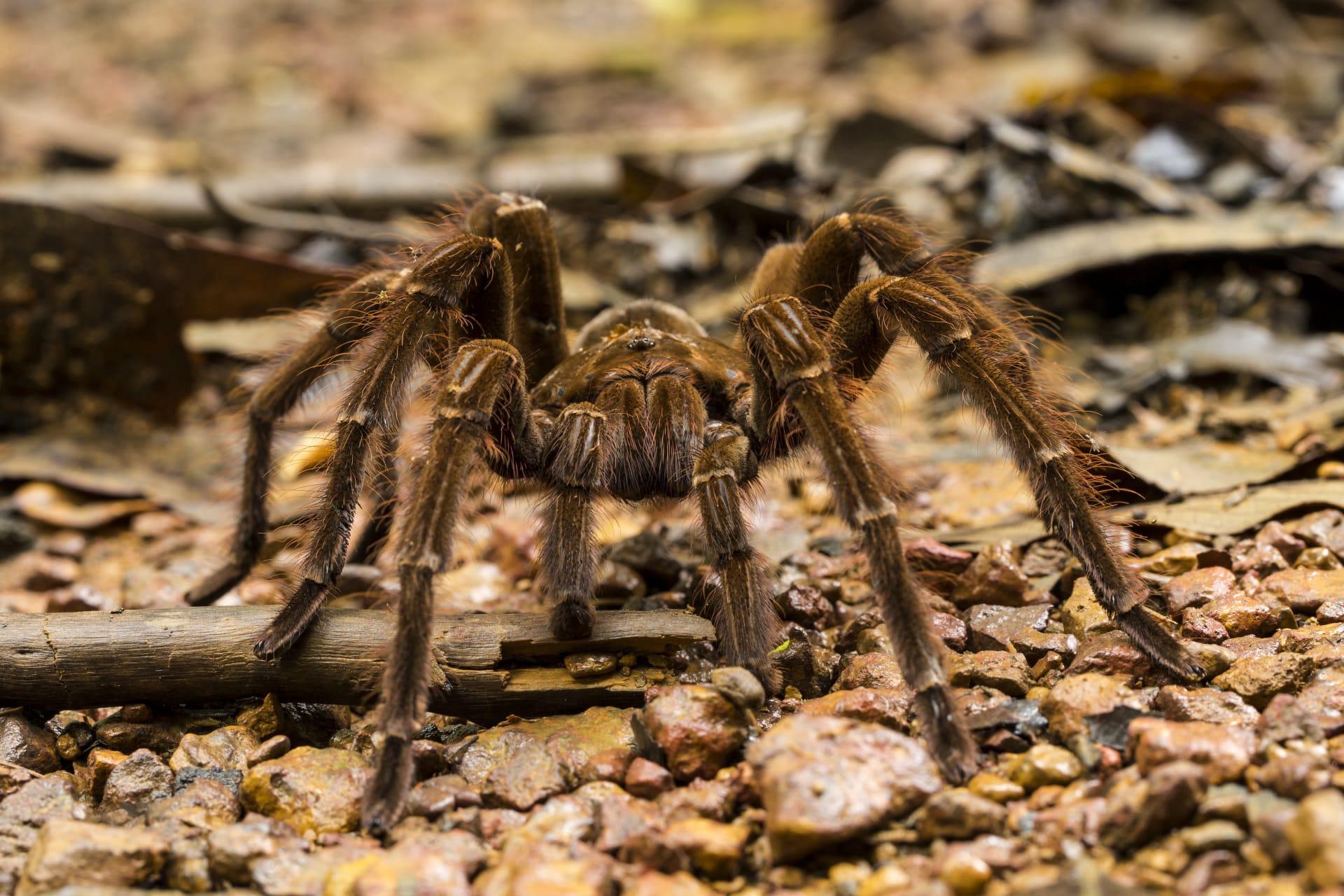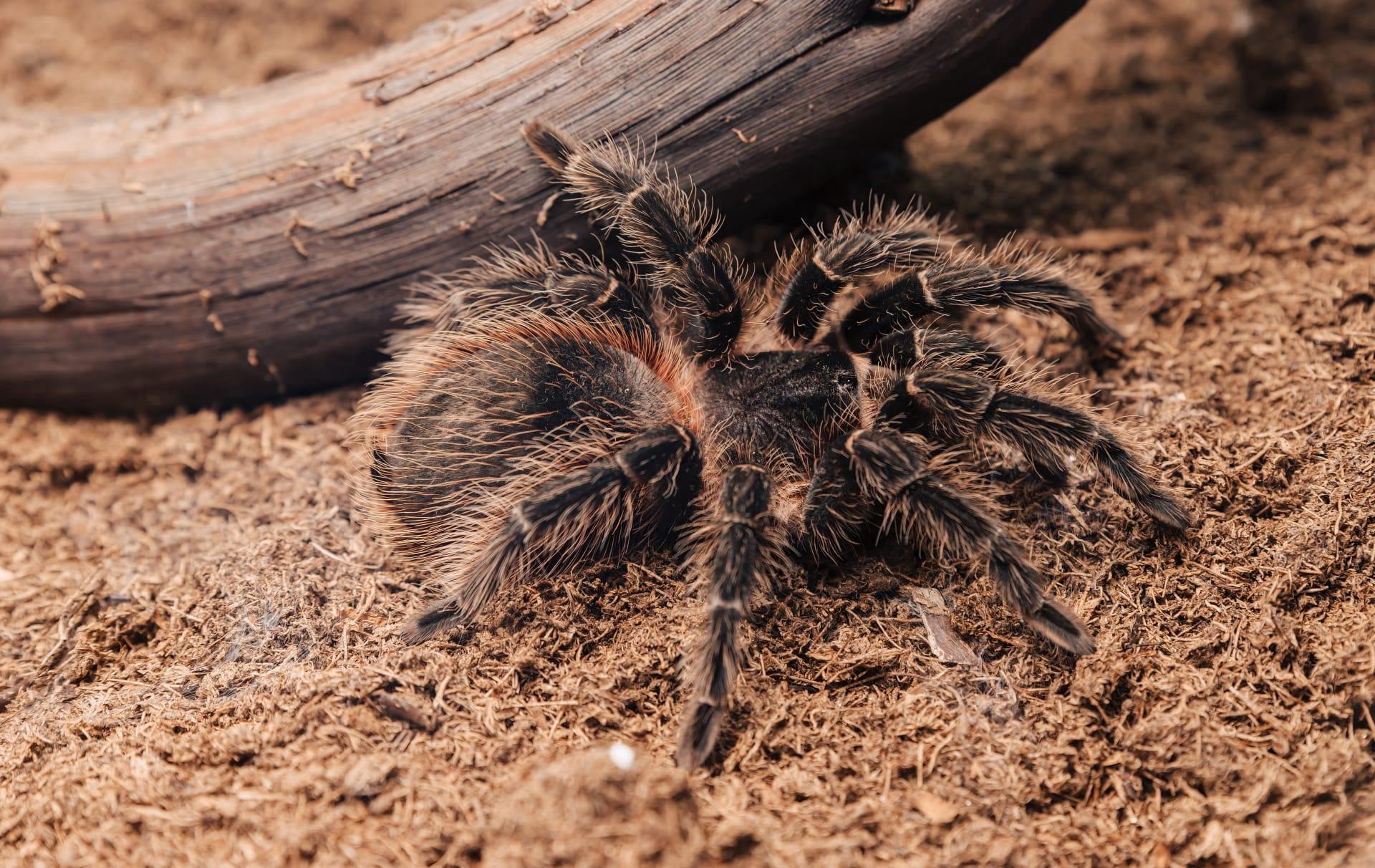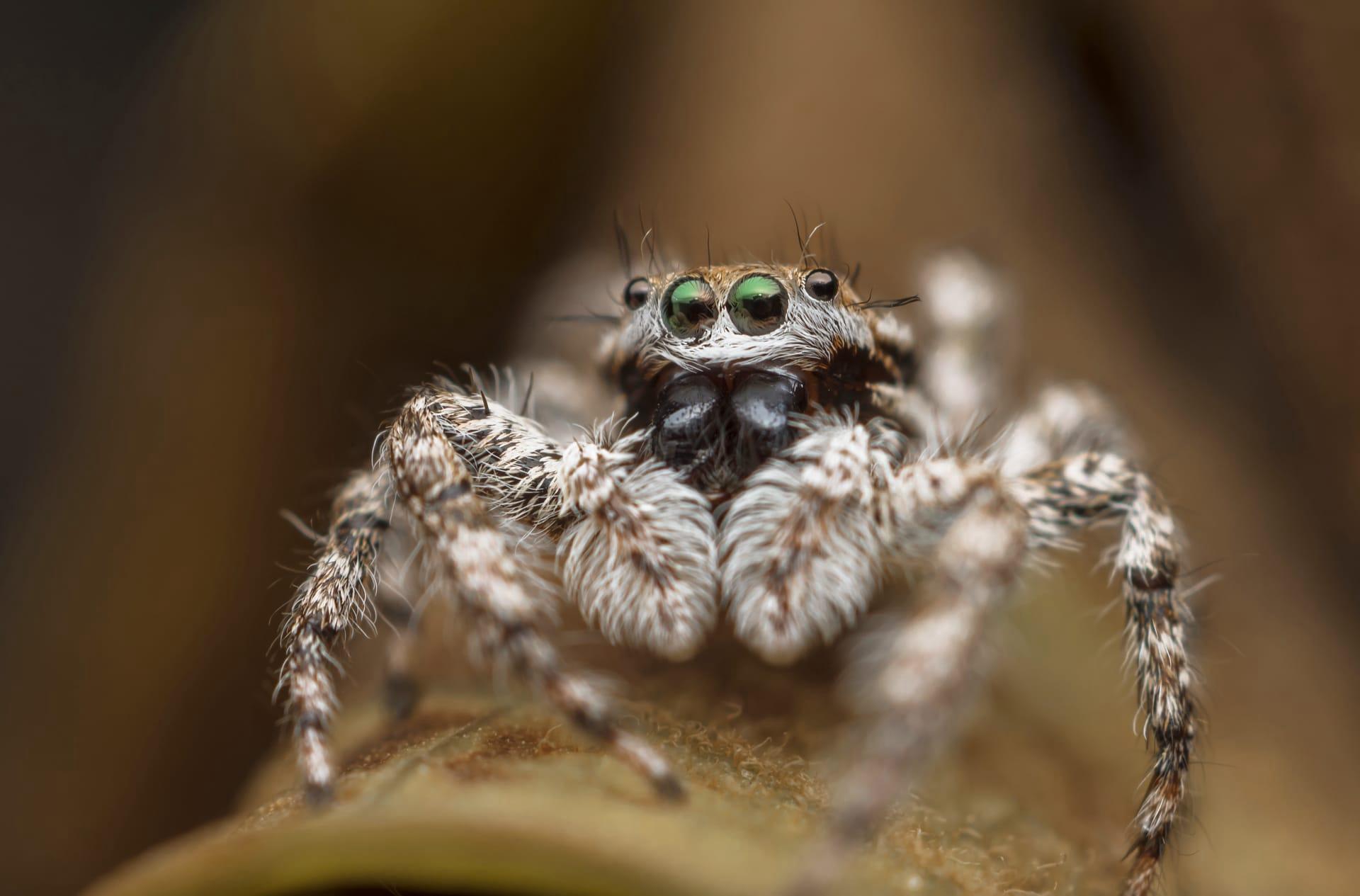1
Wolf spiders are exceptional hunters, known for their speed and agility. Unlike many other spider species that rely on webs to catch prey, wolf spiders actively stalk and pounce on their targets. They can reach speeds of up to 2 feet per second, making them one of the fastest arachnids. This hunting method is complemented by their excellent night vision, aided by their large, forward-facing eyes that reflect light, much like a cat's. This adaptation not only helps them in nocturnal hunting but also in avoiding predators.
Another intriguing aspect of wolf spiders is their maternal behavior. Female wolf spiders are notable for carrying their egg sacs attached to their spinnerets at the rear of their abdomen. Once the spiderlings hatch, they climb onto their mother's back and stay there for several weeks until they are large enough to fend for themselves. This form of parental care, which is rare among spiders, ensures a higher survival rate for the offspring. The sight of a wolf spider with dozens of tiny spiderlings on her back is both fascinating and unsettling to many observers.

2
Wolf spiders possess a unique physiological feature: their ability to regenerate lost limbs. If a wolf spider loses a leg, it can regrow it over successive molts. The new leg, however, is often thinner and shorter than the original. This regeneration is particularly vital for their survival, given their active hunting lifestyle which can lead to frequent injuries. Moreover, the regenerative process is faster in younger spiders and slows down as they mature, showing the remarkable adaptability of these creatures.
Another remarkable characteristic is their method of communication. Wolf spiders use vibrations and visual signals to communicate, especially during mating rituals. The males perform complex courtship dances that involve a series of leg taps and body vibrations to attract females. These dances not only serve to woo potential mates but also to distinguish themselves from prey, avoiding a fatal misunderstanding. This form of communication is crucial for their reproduction and highlights the complexity of their social interactions.

3
Wolf spiders are known for their diverse habitats. They are found on every continent except Antarctica, adapting to a wide range of environments from tropical rainforests to arid deserts. Their adaptability is attributed to their hunting skills and ability to survive in various climates. In desert areas, some species construct burrows with silk-lined doors to escape the extreme heat, showcasing their ingenuity in survival strategies.
Their diet is as diverse as their habitats. Wolf spiders primarily feed on insects, including crickets, grasshoppers, and ants. However, they are opportunistic feeders and can consume other spiders, small invertebrates, and even small amphibians and reptiles when available. This varied diet helps them play a crucial role in controlling the populations of various pests and maintaining ecological balance in their respective ecosystems.

4
Wolf spiders have a unique adaptation in their respiratory system. They breathe through a combination of book lungs and tracheal systems, a trait shared with only a few other spider families. Book lungs allow for efficient gas exchange in stagnant air environments, while the tracheal system is effective in active situations like hunting. This dual respiratory system reflects their active lifestyle and ability to thrive in various environments.
Interestingly, the coloration of wolf spiders plays a vital role in their survival. Their brown, gray, and black patterns provide excellent camouflage against the forest floor, rocks, and leaves, aiding them in both predation and evasion from predators. Some species can even change their color to match their surroundings, a process that can take days or weeks. This ability to blend into the environment is a testament to their evolutionary success as both predators and prey.

5
Wolf spiders exhibit a unique sensitivity to seismic vibrations. They can detect vibrations in the ground caused by the movement of prey or predators. This sensitivity allows them to react swiftly to potential threats or opportunities for hunting. Their leg hairs, known as trichobothria, are tuned to these vibrations, providing them with crucial information about their immediate environment. This heightened awareness makes them formidable hunters and elusive prey.
Wolf spiders play a significant role in folklore and mythology. In many cultures, they are symbols of perseverance and strength due to their hunting skills and resilience. In Native American mythology, for example, they are often portrayed as wise and cunning characters. Their presence in human culture underscores the fascination and respect these creatures command across different societies.